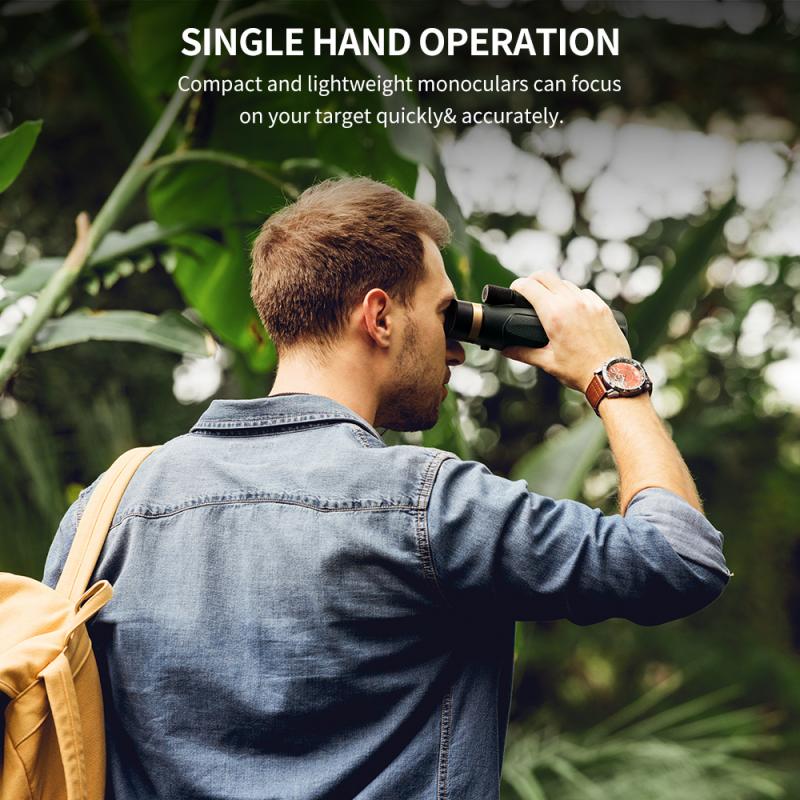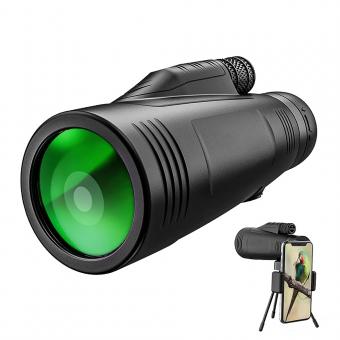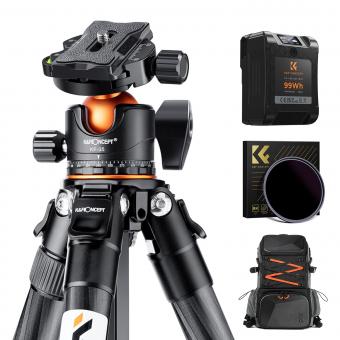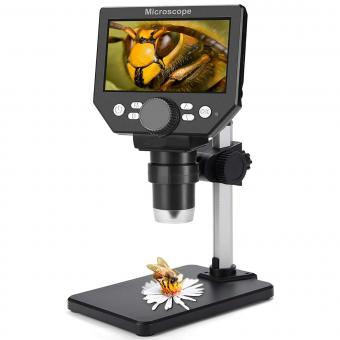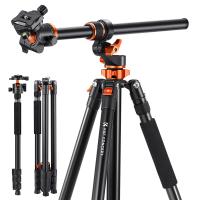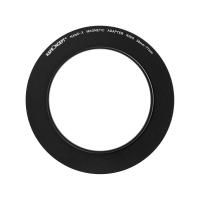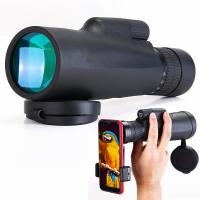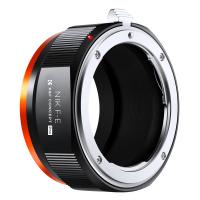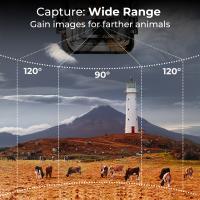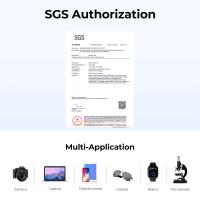What Does Monocular Mean ?
Monocular refers to something that is designed to be used with one eye, or that is seen with only one eye. For example, a monocular telescope is a device that is used to view distant objects with one eye, while a binocular telescope is used with both eyes. Monocular vision is also a term used to describe the ability to see with only one eye, which can affect depth perception and other aspects of visual perception. Monocular cues are visual cues that can be perceived with one eye, such as perspective, size, and texture gradient, and are used to help judge distance and depth.
1、 Monocular refers to something that is used or seen with one eye.
Monocular refers to something that is used or seen with one eye. The term is commonly used in the context of optics, where a monocular device is a single eyepiece used for magnification or viewing distant objects. Monoculars are often used in outdoor activities such as birdwatching, hunting, and hiking, as they are lightweight and easy to carry.
In recent years, monocular vision has also become a topic of interest in the field of artificial intelligence and computer vision. Monocular depth estimation, for example, is a technique used to estimate the depth of a scene using only a single camera. This has applications in autonomous driving, robotics, and augmented reality.
Monocular vision is also an important consideration in the field of ophthalmology. Monocular vision loss can occur due to a variety of factors, including injury, disease, or congenital conditions. In some cases, monocular vision loss can be compensated for with the use of visual aids such as glasses or contact lenses. However, in other cases, it may be permanent and require specialized treatment or rehabilitation.
Overall, the term monocular refers to something that is used or seen with one eye, and has applications in a variety of fields including optics, artificial intelligence, computer vision, and ophthalmology.
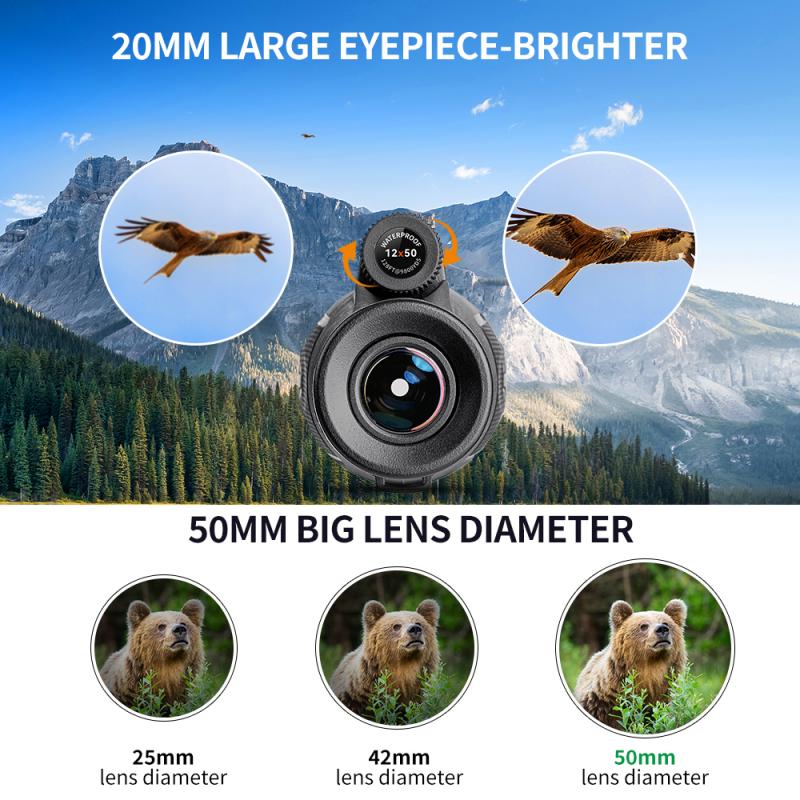
2、 Monocular vision in animals
Monocular vision refers to the ability of an animal to see with only one eye. This is in contrast to binocular vision, which involves the use of both eyes to perceive depth and distance. Many animals, including birds, reptiles, and some mammals, have monocular vision.
In animals, monocular vision is often used to scan the environment for potential threats or prey. For example, birds of prey such as eagles and hawks have excellent monocular vision, which allows them to spot small prey from great distances. Similarly, many reptiles have monocular vision that allows them to detect movement and locate prey.
Recent research has shown that monocular vision may also play a role in social behavior and communication in some animals. For example, some birds use monocular vision to keep an eye on potential rivals or mates while still scanning the environment with their other eye.
Overall, monocular vision is an important adaptation that allows animals to survive and thrive in their environments. While it may not provide the same level of depth perception as binocular vision, it offers unique advantages in terms of scanning the environment and detecting potential threats or opportunities.

3、 Monocular cues in depth perception
What does monocular mean? Monocular refers to the use of one eye in vision, as opposed to binocular vision which involves the use of both eyes. Monocular cues in depth perception are visual cues that can be perceived with one eye alone and provide information about the relative distance and depth of objects in the environment. These cues include linear perspective, texture gradient, interposition, relative size, and motion parallax.
Linear perspective refers to the way parallel lines appear to converge as they recede into the distance. Texture gradient refers to the way the texture of surfaces appears to become denser and smaller as they recede into the distance. Interposition occurs when one object partially blocks another, indicating that the blocked object is farther away. Relative size refers to the way objects of known size appear smaller when they are farther away. Motion parallax refers to the way objects appear to move at different rates depending on their distance from the observer.
Recent research has shown that monocular cues are processed in different areas of the brain than binocular cues, and that the brain integrates information from both types of cues to create a unified perception of depth. Additionally, some studies suggest that the use of monocular cues may be more important in certain situations, such as when objects are viewed from a distance or when one eye is occluded. Overall, monocular cues play an important role in our perception of depth and help us navigate and interact with our environment.
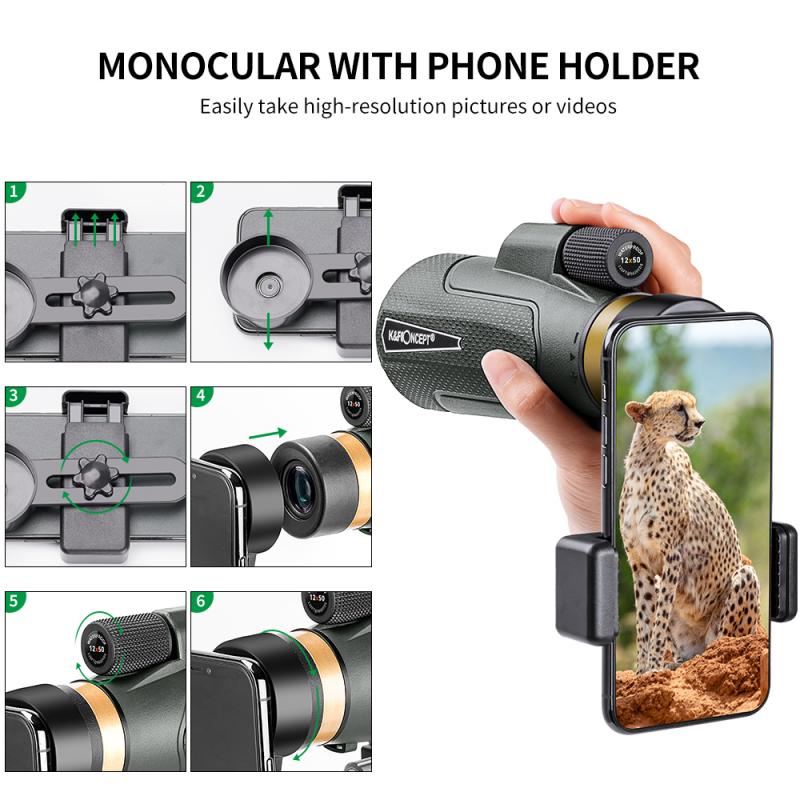
4、 Monocular blindness and its causes
What does monocular mean? Monocular refers to the condition of having vision in only one eye. Monocular blindness, also known as unilateral blindness, is the loss of vision in one eye while the other eye remains unaffected. This condition can be caused by a variety of factors, including trauma, infection, or disease.
The most common cause of monocular blindness is damage to the optic nerve, which connects the eye to the brain. This can occur due to a head injury, stroke, or other medical conditions such as glaucoma or optic neuritis. Other causes of monocular blindness include retinal detachment, macular degeneration, and cataracts.
Recent research has shown that monocular vision loss can have a significant impact on a person's quality of life. It can affect depth perception, balance, and the ability to perform daily activities such as driving or reading. In addition, individuals with monocular vision loss may experience psychological distress and social isolation.
Treatment for monocular blindness depends on the underlying cause. In some cases, vision may be restored through surgery or medication. However, in many cases, the loss of vision is permanent. Rehabilitation programs can help individuals with monocular vision loss adapt to their condition and learn new skills to improve their quality of life.
In conclusion, monocular blindness is a condition where an individual loses vision in one eye. It can be caused by a variety of factors and can have a significant impact on a person's quality of life. Treatment options depend on the underlying cause, and rehabilitation programs can help individuals adapt to their condition.
